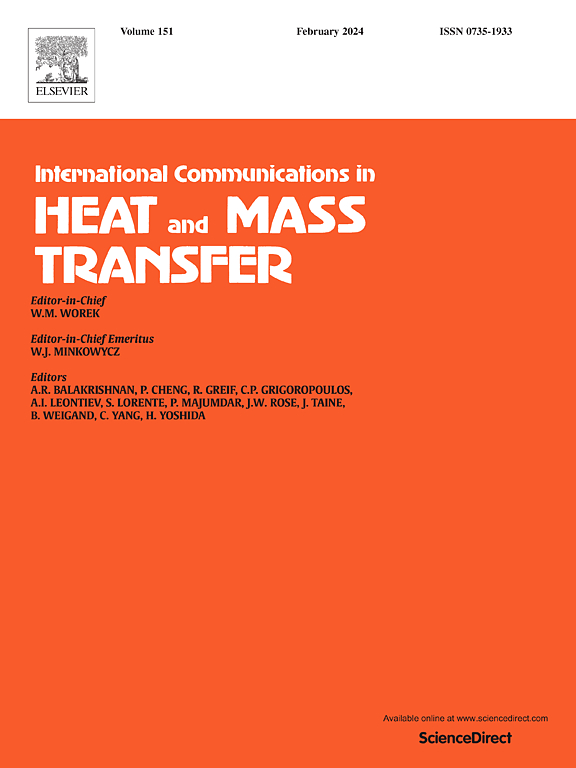基于多物理场耦合的地铁铝基复合材料制动盘性能数值与实验分析
IF 6.4
2区 工程技术
Q1 MECHANICS
International Communications in Heat and Mass Transfer
Pub Date : 2025-08-04
DOI:10.1016/j.icheatmasstransfer.2025.109438
引用次数: 0
摘要
本研究设计了一种最大速度为100 km/h的地铁列车轻量化制动盘,并进行了多物理场耦合下的数值分析和1:1制动功率台架试验。流固耦合分析结果表明,在介质速度(约80 ~ 120 km/h)的列车泵气效率较好。热机耦合分析结果表明,选项2与材料2结合使用性能最佳,制动后最高温度为228.54℃。外制动盘的应力幅值大于内制动盘的应力幅值,最大应力为193Mpa,低于铝合金材料在200℃下的最大抗拉强度极限220mpa。试验结果表明,三种试验工况下制动盘表面温度均小于350℃,设计的制动盘满足三种连续紧急制动工况和多种高速工况的使用制动要求。该研究有助于提高列车运行的安全性,为后续高速铝合金制动盘的研究提供思路。本文章由计算机程序翻译,如有差异,请以英文原文为准。
Numerical and experimental analysis of aluminum matrix composite brake disc performance for metro trains based on multiple physical field coupling
In this study, a lightweight brake disc for metro trains with the maximum speed of 100 km/h was designed, and numerical analysis under Multiple Physical Field field coupling and 1:1 braking power bench test were conducted. The results of the fluid-solid coupling analysis show that the radiating ribs arrangement in the speed of medium (about 80-120 km/h) train pump air efficiency is good. The results of the thermo-machine coupling analysis show that option 2, in combination with Material 2, shows the best performance, and the highest temperature after braking is 228.54 °C. The stress amplitude of the outer brake disc is greater than that of the inner brake disc, and the maximum stress is 193Mpa, which is lower than the maximum tensile strength limit of 220 MPa of aluminum alloy material at 200 °C. The test results show that the temperature of the surface of the brake disc under the three test conditions is less than 350 °C, and the designed discs meet the requirements of three continuous emergency braking as well as many service braking conditions at high speeds. This study helps to improve the safety of train operation and provides ideas for subsequent research on higher speed aluminum alloy brake discs.
求助全文
通过发布文献求助,成功后即可免费获取论文全文。
去求助
来源期刊
CiteScore
11.00
自引率
10.00%
发文量
648
审稿时长
32 days
期刊介绍:
International Communications in Heat and Mass Transfer serves as a world forum for the rapid dissemination of new ideas, new measurement techniques, preliminary findings of ongoing investigations, discussions, and criticisms in the field of heat and mass transfer. Two types of manuscript will be considered for publication: communications (short reports of new work or discussions of work which has already been published) and summaries (abstracts of reports, theses or manuscripts which are too long for publication in full). Together with its companion publication, International Journal of Heat and Mass Transfer, with which it shares the same Board of Editors, this journal is read by research workers and engineers throughout the world.

 求助内容:
求助内容: 应助结果提醒方式:
应助结果提醒方式:


